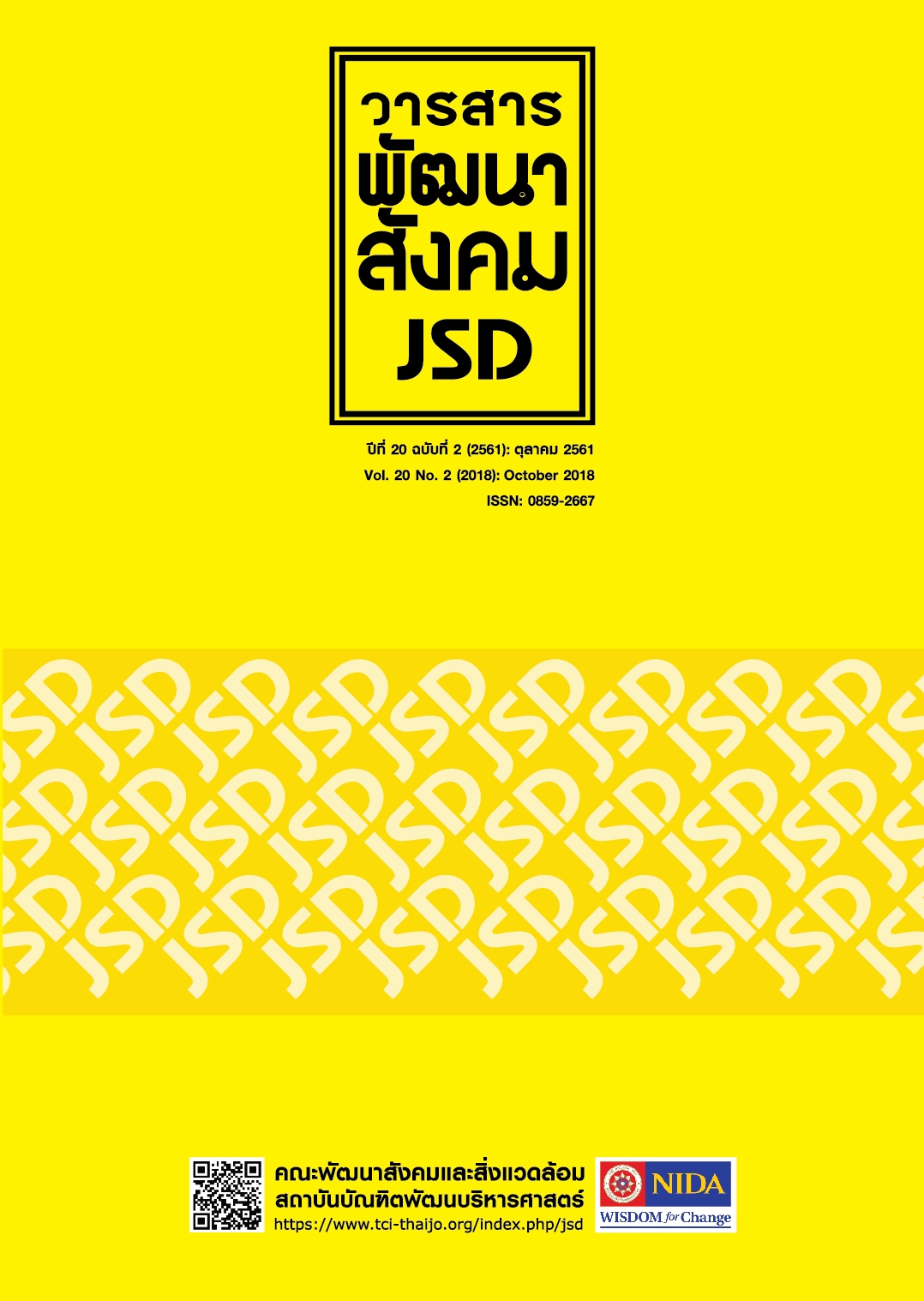Proactive Pacifism In The Case Of Students And People’s Network For Thailand’s Reform (STR)
Main Article Content
Abstract
This article aims to study meanings “Proactive Pacifism” of the Students and People’s Network for Thailand Reform (STR) of socio- political movement by using the in-depth interview method of STR’s five related groups and participatory observation. The study shows that the concept is the movement among intense socio- political situations, which have the circumstantial and natural movement that it accepts any conflicts as a general situation in society. It shall have the aspect of “New Social Movements” by increasing the socio- political pressure to the government strongly in order to see a better change of socio-political system. The meaning of STR’s movement uses the concept of proactive pacifism indeed and it’s not just a vague discourse, because this STR’s movement is the real practice that is not a beginner to create the conflicts or violence but STR is the actor who assembles to communicate to the society for recognizing the disapproval of STR and allies with the government behaviors that lack of the principles of good governance, Legal State and Rule of Law to run the country. The lesson of the STR’s movement following the concept of proactive pacifism makes us known that this movement has a good systematic organization and the powerful political proposal for changing the society.
Article Details
References
2. Banmuang. (2016). Civil disobedience: direct democracy [Online]. Retrieved October 10, 2016 from http://www.banmuang.co.th/oldweb/2014/01/ดื้อแพ่ง: ประชาธิปไตยทางตรง.
3. Chanchai, M. (2016). Civil Disobedience. Strategic Research Institute Institute of Defense [In Thai] Accessed from: www.sscthailand.org, 5 October 2016.
4. Deeorasert, D. (2014). Civil Disobedience. Command and General Staff College, Bangkok.
5. Katasila, S. (2017). Political Ideology of The People's Democratic Reform Committee (PDRC) in Thailand Democratic Crisis. Ph.D., College of Social Innovation, Rangsit University
6. Khamchai, T. (2014). Strategic Civil Disobedience Pervasiveness. Curriculum Development for Terrorism Knowledge and Insurgency for Executives Army Chief of Staff, Bangkok.
7. King Prajadhipok's Institute. (2000). Factors and Conditions of Success of Peace. Introduce students to the Certificate Program in Basic Concepts of Managing Public Policy Conflict in Peace, Issue 7, November 19, 2000.
8. Nagy, Stephen R. (2017). Japan’s Proactive Pacifism: Investing in Multilateralization and Omnidirectional Hedging. Department of Politics and International Studies, at the International Christian University, Tokyo.
9. Nititorn Lumluea. (2017). Indept-interview.
10. Panchavinin, S. (2007). Righteousness and civil disobedience are institutions in Thai democracy. Ph.D., Faculty of Political Science, Thammasat University.
11. Piriyarangsan, S. (2015). Social Sanctions. College of Social Innovation, Rangsit University.
12. Satha-Anand, C. (2016). Understanding Peace (In the midst of the great conflict in Thai society). "[Online] Available from: http://thaipeace.wordpress.com, 8 October 2016.
13. Thamthai, M. (2008). Peaceful Conflict Management. Documentation of the conflict resolution process in Thai society with the new constitution. Bangkok.


